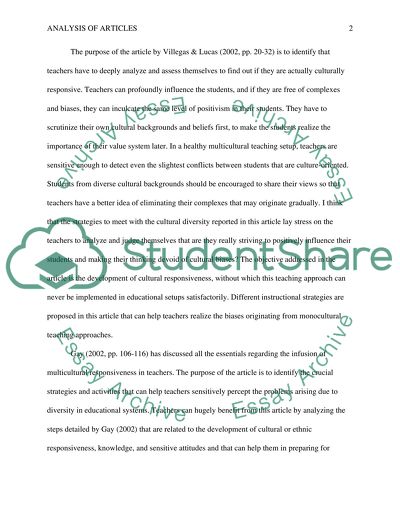Cite this document
(Culturally Responsive Pedagogy Article Example | Topics and Well Written Essays - 1500 words, n.d.)
Culturally Responsive Pedagogy Article Example | Topics and Well Written Essays - 1500 words. https://studentshare.org/culture/1571320-analysis-of-articles
Culturally Responsive Pedagogy Article Example | Topics and Well Written Essays - 1500 words. https://studentshare.org/culture/1571320-analysis-of-articles
(Culturally Responsive Pedagogy Article Example | Topics and Well Written Essays - 1500 Words)
Culturally Responsive Pedagogy Article Example | Topics and Well Written Essays - 1500 Words. https://studentshare.org/culture/1571320-analysis-of-articles.
Culturally Responsive Pedagogy Article Example | Topics and Well Written Essays - 1500 Words. https://studentshare.org/culture/1571320-analysis-of-articles.
“Culturally Responsive Pedagogy Article Example | Topics and Well Written Essays - 1500 Words”. https://studentshare.org/culture/1571320-analysis-of-articles.


